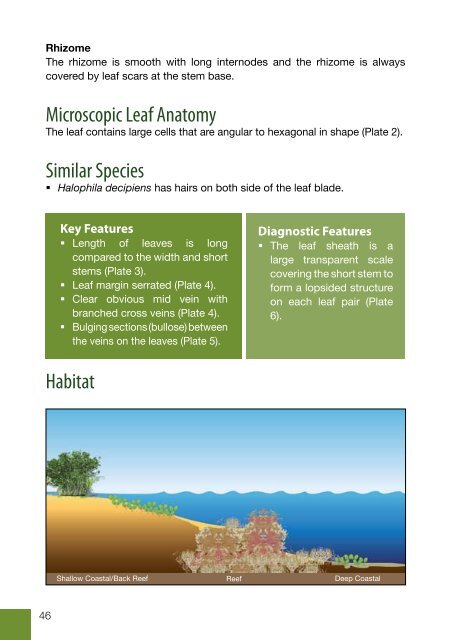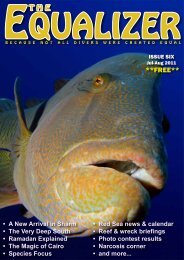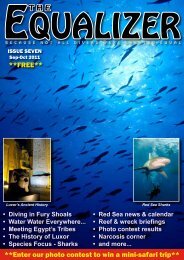Field Guide to Seagrasses of the Red Sea - Seagrass-Watch
Field Guide to Seagrasses of the Red Sea - Seagrass-Watch
Field Guide to Seagrasses of the Red Sea - Seagrass-Watch
Create successful ePaper yourself
Turn your PDF publications into a flip-book with our unique Google optimized e-Paper software.
Rhizome<br />
The rhizome is smooth with long internodes and <strong>the</strong> rhizome is always<br />
covered by leaf scars at <strong>the</strong> stem base.<br />
Microscopic Leaf Ana<strong>to</strong>my<br />
The leaf contains large cells that are angular <strong>to</strong> hexagonal in shape (Plate 2).<br />
Similar Species<br />
• Halophila decipiens has hairs on both side <strong>of</strong> <strong>the</strong> leaf blade.<br />
Key Features<br />
• Length <strong>of</strong> leaves is long<br />
compared <strong>to</strong> <strong>the</strong> width and short<br />
stems (Plate 3).<br />
• Leaf margin serrated (Plate 4).<br />
• Clear obvious mid vein with<br />
branched cross veins (Plate 4).<br />
• Bulging sections (bullose) between<br />
<strong>the</strong> veins on <strong>the</strong> leaves (Plate 5).<br />
Diagnostic Features<br />
• The leaf sheath is a<br />
large transparent scale<br />
covering <strong>the</strong> short stem <strong>to</strong><br />
form a lopsided structure<br />
on each leaf pair (Plate<br />
6).<br />
Habitat<br />
Shallow Coastal/Back Reef<br />
Reef<br />
Deep Coastal<br />
46





